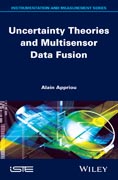
Addressing recent challenges and developments in this growing field, Multisensor Data Fusion Uncertainty Theory first discusses basic questions such as: Why and when is multiple sensor fusion necessary? How can the available measurements be characterized in such a case? What is the purpose and the specificity of information fusion processing in multiple sensor systems? Considering the different uncertainty formalisms, a set of coherent operators corresponding to the different steps of a complete fusion process is then developed, in order to meet the requirements identified in the first part of the book. INDICE: 1. Introduction: context, need, approach. 2. Multi–sensor fusion: field of application, stakes, problem at hand, difficulties, overview of useful techniques, processing architectures. 3. Basic formalisms: probability, fuzzy sets, possibility theory, belief functions, formal relations between these formalisms, place of each of them in a fusion process, and global coherence. 4. Frame of discernment management and information propagation: Comparison of the available tools (existing or new) in the different formalisms introduced previously ; application to knowledge updating. 5. Reliability management: discounting, extension, integration of contextual information, implementation, validity domain of sources ; application to pixel fusion in multispectral images. 6. Combination of sources: a synthetic view on the combination rules from the different theoretical formalisms; conflict management; understanding of Zadeh’s paradox; distinct incomplete frame of discernment (application to the fusion of binary assessments); fusion on frame of discernment that are partially overlapping (application to aerial image classification). 7. Data modeling: general principle; integration of the different possible kinds of data; contextual information modeling; relations with multi–criteria decision; application to classification. 8. Decision: possible formalisms and processes in the different theoretical frameworks. 9. Data association: matching of ambiguous observations, general formalism of the problem, integration of classification and similarity information, elaboration of a complete processing, didactic examples. 10. Tracking: purpose and specificity of the approach, Multiple Signal Filter principle, processing implementation, multi–target tracking, data association, track management, illustrations. 11. Conclusion : the answer to the needs, the key to performance, pertinent using of information.
- ISBN: 978-1-84821-354-8
- Editorial: ISTE Ltd.
- Encuadernacion: Cartoné
- Páginas: 368
- Fecha Publicación: 04/12/2014
- Nº Volúmenes: 1
- Idioma: Inglés
